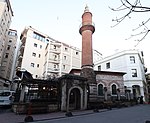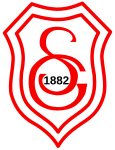Zülfaris Synagogue
19th-century synagogues in TurkeyAsian synagogue stubsBuildings and structures in BeyoğluCommons category link is locally definedEuropean synagogue stubs ... and 10 more
Former synagogues in TurkeyInfobox religious building with unknown affiliationSephardi Jewish culture in TurkeySephardi synagoguesSynagogues completed in 1823Synagogues in IstanbulSynagogues in the Ottoman EmpireSynagogues preserved as museumsTurkish religious building and structure stubsUse mdy dates from September 2024

The Zülfaris Synagogue (Turkish: Zülfaris Sinagogu), also known as the Kal Kadoş Galata Synagogue, is a former Jewish congregation and synagogue located at 39 Büyük Hendek Street, in the Beyoğlu neighbourhood of Istanbul, Turkey. Completed in 1823 and used as a synagogue until 1985, the building was repurposed in 2001 as a Jewish museum.
Excerpt from the Wikipedia article Zülfaris Synagogue (License: CC BY-SA 3.0, Authors, Images).Zülfaris Synagogue
Büyük Hendek Caddesi,
Geographical coordinates (GPS) Address Phone number Website Nearby Places Show on map
Geographical coordinates (GPS)
| Latitude | Longitude |
|---|---|
| N 41.026772 ° | E 28.972733 ° |
Address
500. Yıl Vakfı Türk Musevileri Müzesi
Büyük Hendek Caddesi 39
34421 , Bereketzade (Bereketzade Mahallesi)
Turkey
Open on Google Maps








